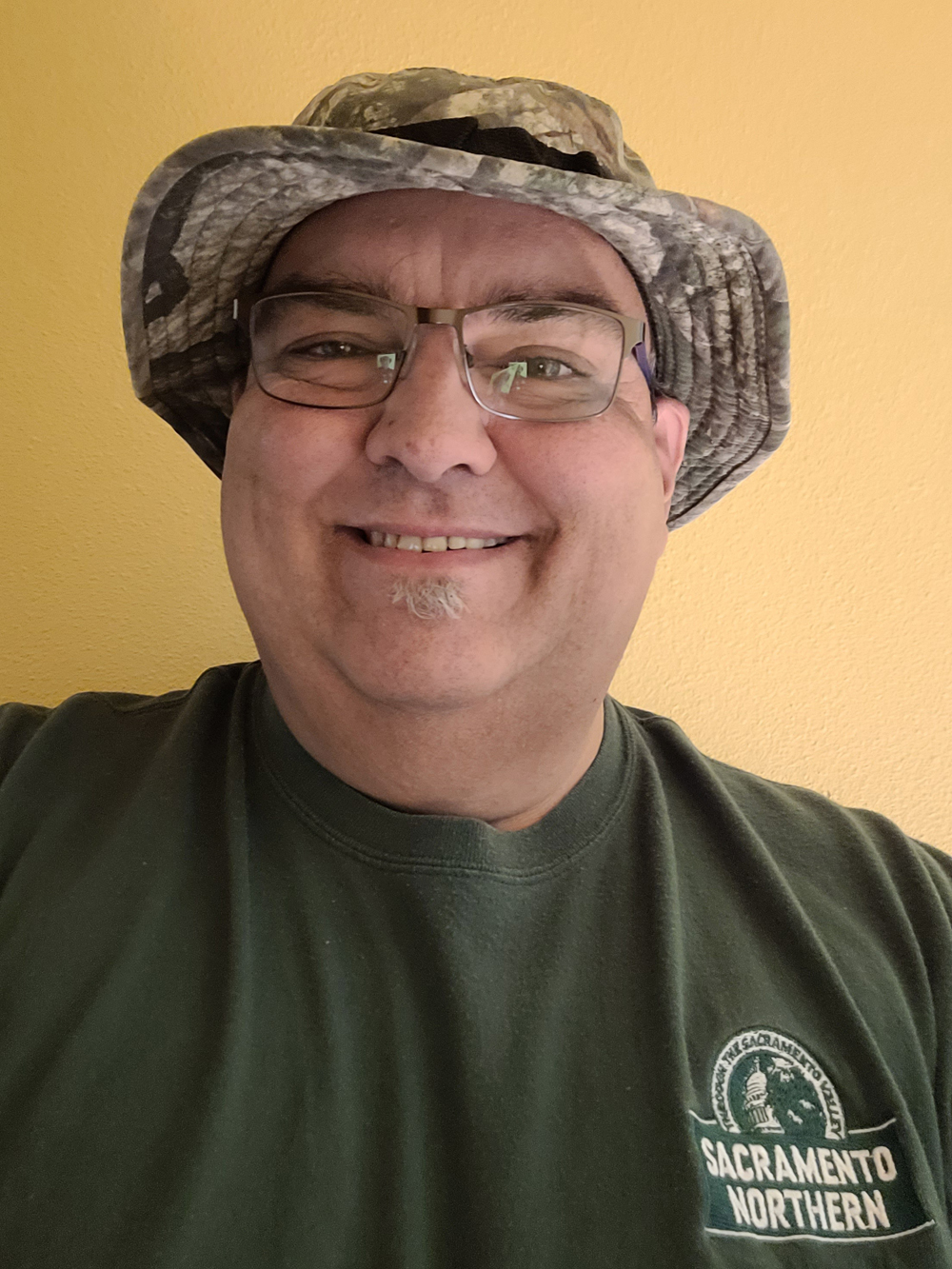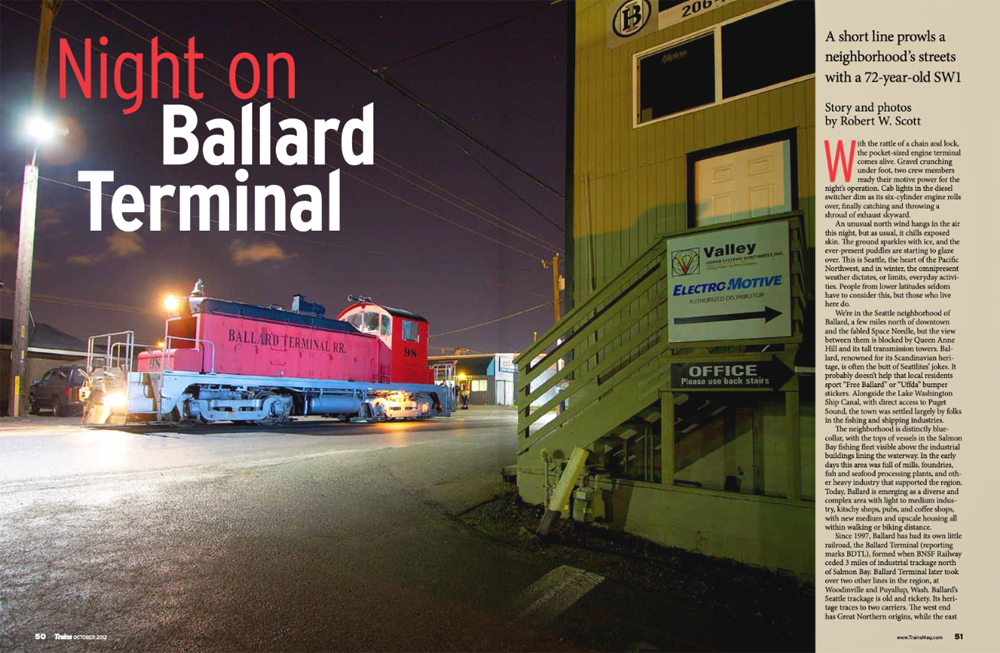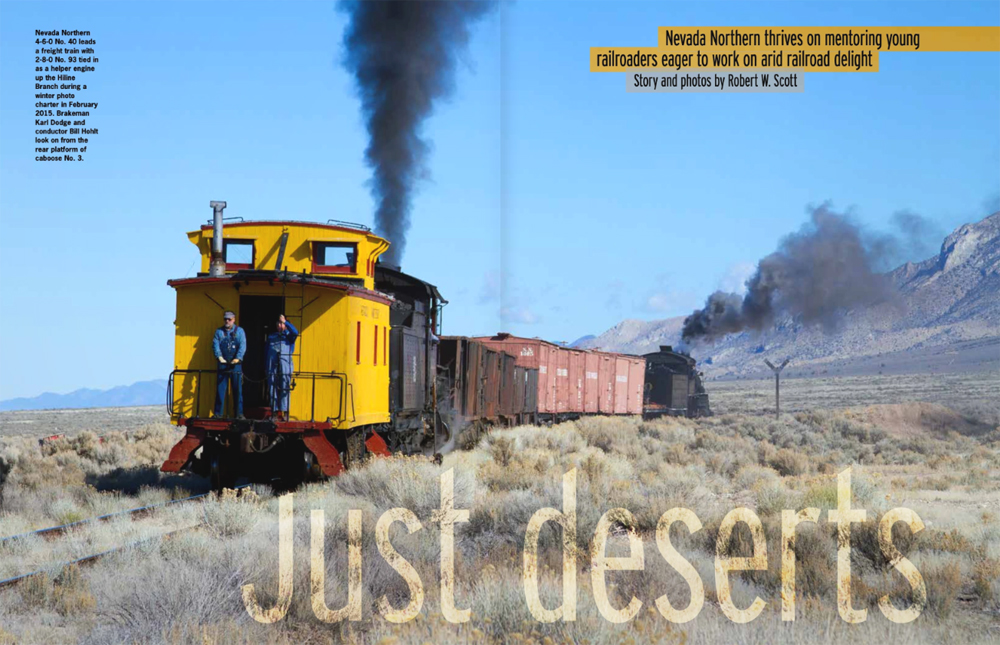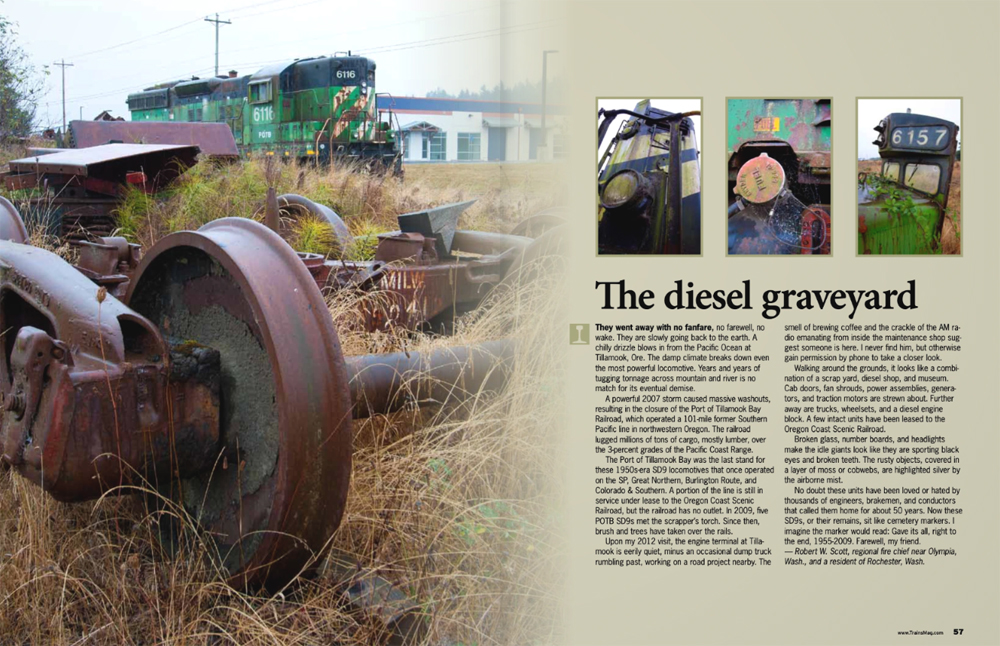What was your first byline in Trains?
Robert Scott: My first byline in Trains was in the May 2005 issue. I reported on the port expansion in Tacoma, Wash., which helped additional traffic for Tacoma Rail. Since that was more of a news story, it was a few more years before I had the opportunity to provide actual non-news content. In the October 2012 issue, I wrote a story called “Night on Ballard Terminal,” that put the reader in the wet, breezy, and cold trackside experience along an industrial railroad that trundled its way along the back alleys and side streets of Ballard, just north of Seattle.
What’s your favorite locomotive and why?
Growing up in the 1970s in Benicia, Calif., I frequently visited the Benicia Industrial Park. This is where I became familiar with the Southern Pacific SW1500s that switched cars nearly every day, all over the park. It was 1987, during a family visit back to this area, that I had the opportunity to get a cab ride on a Southern Pacific SW1500s called “cruds“ by local crews. The sounds of the single unit with a full light package is a favorite memory of those early days in my viewing of railroads.
Describe your love of railroading in six words or less?
Power and sounds of railroading.
What’s your fondest memory as a contributor?
In the May 2018 issue of Trains, I had the chance to focus on the unique operations on the Nevada Northern Railway. As a result of two visits to this amazing railroad, I had gathered substantial information to formulate a story on both the railroad and the dedicated core of volunteers that keep it running.
Working with former Trains Editor Jim Wrinn, we were able to tell a story that was well received by both the Nevada Northern leaders as well as reader feedback. Wrinn gave me adequate space to tell this story, which in turn, gave me more latitude to focus on the uniqueness of this operation.
What article received the biggest reader reaction?
The February 2018 story on the Chambers Bay lift bridge in Steilacoom, Wash., and the March 2014 story on the Diesel Graveyard. Those probably had the most feedback and follow-up questions (or commentary) from readers, both in writing and in person. The Chambers Bay bridge story looked at the unique construction of a lift bridge originally built in 1914. It was one of only three ever built of that design. The article discusses how it works to handle today’s heavy tonnage. The Diesel Graveyard was a somber look at a group of scrapped locomotives on the Port of Tillamook Bay in Oregon. Basically, it’s about the conditions that day and how they looked (and felt) — a sad, yet reflective look.
What advice would you give a new contributor?
 The best advice is to…
The best advice is to…
- Do your research to the fullest.
- Only show your best work.
- Besides gathering information available on the internet, find subject matter experts or simply contact a railroad to help illustrate your story.
- For the photography, make sure you put your best work forward. Ensure it’s well composed and lit so it will replicate well in the magazine.
- When writing, always try to tell the complete story and leave the reader wanting to know more information.
- You will want the story to have the reader then look for more information on their own.
- Write the story so the magazine is a “coffee table” issue instead of one that will simply be filed in the hobby room.

















I would second Jon Ell’s comments on your writing advice, Robert—thanks.
And dwelling in the PNW myself, I have always enjoyed your articles about our region and others. You, Ben Bachmann, Martin’s Hansen and Burwash, Steve Carter, Dave Honan and others are always “first reads” for me when I get my mags, so please keep ‘em coming and many thanks for your authoring efforts—always good stuff!
— “Sasquatch” Tom
Excellent insight and advice Sir! Thank you.